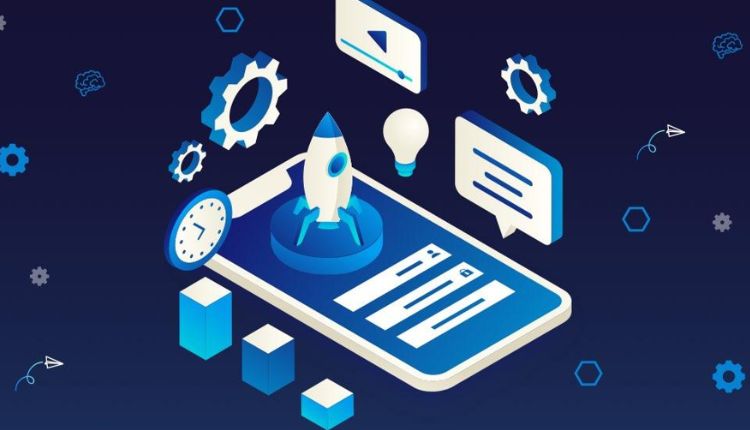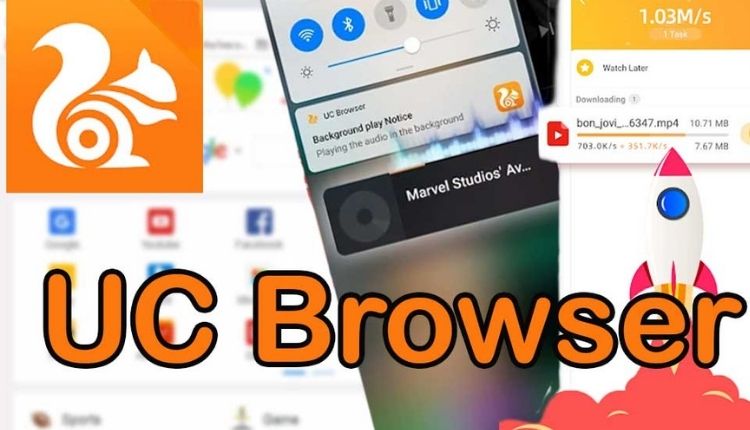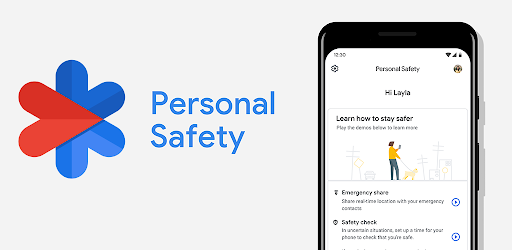
Top 10 Innovations in Mobile Application Development
Since its inception, mobile application development has come a long way, with new technologies, platforms, and trends stepping into the market daily. As the world has shifted to mobile-first digital services, mobile developers are working diligently to come up with innovations.
Now, every sector seeks to incorporate the most recent mobile application development innovations into their operations and expand their reach to the most effectively targeted audience.
So, let’s dive into the top 10 innovations in mobile app development.
List of Top 10 Innovations In Mobile App Development 2023
Here are the top 10 innovations in mobile application development in 2023.
1) The Cloud
The cloud is one of the most important developments in mobile application development, and its importance is only increasing. Cloud computing allows for applications to be developed and hosted virtually, providing users with access to large amounts of data, applications, and storage without the need for a physical server.
By leveraging the cloud, applications can be more quickly deployed, more cost-effectively managed, and more easily maintained than ever before. Additionally, cloud computing can provide scalability and elasticity to applications, making them more robust and able to handle larger user loads.
All of this makes the cloud an invaluable tool for mobile application developers.
2) Artificial Intelligence
Artificial Intelligence (AI) allows applications to process large amounts of data quickly and efficiently, making it possible for them to identify patterns, recognize speech, and interact with users in meaningful ways.
AI can also be used to optimize user experience by personalizing content and providing automated recommendations. AI-powered mobile applications are already being used in many areas, from healthcare and finance to transportation and education.
By leveraging AI capabilities, developers can build applications that are more accurate, secure, and user-friendly than ever before. As AI continues to evolve, its potential applications in mobile development are limitless.
3) Augmented Reality
One of the most fascinating and potentially game-changing breakthroughs in mobile application development is augmented reality (AR). Virtual objects are used in augmented reality (AR) and are superimposed on a live camera image.
Multiple mobile applications have already incorporated this technology, including game apps for interactive content and guidance and directions apps for navigation and directions.
Additionally, the introduction of 5G networks has significantly increased the speed and dependability of AR technology. Improved latency will enable AR applications to operate more quickly and give users experiences that are more in-depth and realistic.
In addition to these benefits, developers can now produce high-quality 3D models that can be used to improve the AR experience even more.
Augmented Reality is an incredibly powerful tool that can be used to develop immersive and engaging experiences for users.
4) The Internet of Things
The Internet of Things, or IoT for brief is the connection of all physical objects that are linked to the Internet. These can gather, keep, and exchange data among themselves thanks to this network of connected objects.
IoT technology has been around for a while and is growing in popularity in the field of developing smartphone applications. With the help of this technology, developers have been able to build applications that can communicate with a wide range of gadgets and sensors, giving people remote control over their homes, cars, and other items.
Additionally, the use of IoT in the development of mobile apps has enabled the development of applications that can watch and analyze data in real-time. As per the React native app development company, this can be used to enhance security and safety, streamline procedures, and enhance customer support.
Likewise, IoT offers insights into consumer behaviour that assist companies in identifying areas for development. Overall, the mobile application development business is being rapidly revolutionized by the Internet of Things.
It’s understandable why it’s becoming a go-to option for many businesses given its capacity to link numerous devices to a single network and deliver insightful data.
5) Blockchain
Blockchain technology has been gaining more attention in recent years, and it’s becoming increasingly popular for mobile app development. A blockchain is essentially a distributed database that stores information securely and immutably. It works by building a chain of blocks that are linked together, each containing a cryptographic hash of the previous block.
This creates an immutable ledger that can be used to store transactions and other data, allowing for secure, distributed computing with no centralized authority.
In mobile app development, blockchain technology can be used for various purposes. It can be used to store digital assets securely, or it can be used to develop decentralized applications that run on a peer-to-peer network. It can also be used to build secure wallets and payment systems, as well as token-based loyalty programs.
Overall, blockchain is an emerging technology with a lot of potential for mobile app development. It offers a secure, distributed platform that can be used to build innovative applications and services, while also offering users the security and privacy they need.
6) Conversational User Interfaces
Conversational user interfaces (CUI) allow users to interact with a computer, app, or device through natural language processing. They are based on the idea of having a conversation with a computer, instead of the traditional method of interacting with a machine by typing commands or clicking on icons.
CUI’s are becoming increasingly popular as they provide users with an intuitive and user-friendly way to interact with their devices. CUIs use voice-based conversations to understand user input and respond accordingly. The technology can recognize spoken words and phrases, and then take action in response.
For instance, a user asks, “How is the weather like today?”, and the CUI will provide the requested information. CUIs are also capable of understanding complex questions and commands.
The most common applications for CUIs are virtual assistants such as Amazon Alexa, Google Assistant, and Apple Siri. These assistants allow users to ask questions and give commands to their devices using natural language processing, rather than relying on pre-defined commands.
Other popular applications for CUI include chatbots, which are automated programs that simulate conversations with humans. Chatbots can be used to answer customer service inquiries, provide product information, and even book appointments.
7) 5G
The fifth generation of cellular networks, 5G, is the latest in mobile technology innovation. It promises higher speeds, greater reliability and faster response times than its predecessors.
With download speeds up to 100 times faster than 4G, 5G will be capable of supporting new applications such as augmented reality and virtual reality that require low latency and high bandwidth. 5G is expected to offer speeds as high as 10 Gbps, or even 20 Gbps when using mmWave technology.
As per the provider of Android app development services in India, the increased capacity of 5G also makes it possible to support more devices per cell site, allowing more users to be connected at the same time and boosting mobile broadband coverage in areas where 4G service was not previously available.
8) Biometrics
For mobile application developers seeking to add an additional layer of security, biometrics technology is an effective tool.
To verify a user’s identification, biometric authentication systems use biological information like fingerprints, facial recognition, iris scans, or voice recognition. Biometric information is distinctive and difficult to guess or steal, making it perfect for applications like financial transactions that need additional security.
Consumer-facing apps like logging into an app or unlocking a smartphone are also growing in popularity. The convenience and security of mobile applications can be increased, and the user experience can be made safer, by utilizing biometric technologies.
9) Serverless Computing
A completely new approach to developing and launching apps, serverless computing does away with the need to manage server infrastructure. Developers can concentrate on coding rather than managing and configuring servers thanks to the simple manner in which scaling up and down can be done as needed.
Serverless computing divides applications into discrete, independent tasks that are launched in response to an event or other input. Developers can then profit from the on-demand scalability, pay-as-you-go pricing, and other advantages of cloud computing by hosting these functions in the cloud.
There are numerous advantages to serverless computing, including
- Reduced development and maintenance costs,
- Faster time to market, and
- More efficient resource usage.
Additionally, serverless computing helps developers build applications quickly by automatically provisioning the necessary infrastructure and providing services such as authentication and logging.
10) Progressive Web Apps
Progressive Web Apps (PWAs) are the latest innovation in mobile application development. PWAs are web applications that are built to look and feel like native apps.
Unlike traditional web applications, PWAs can be installed on a user’s device, making them accessible even when the user is not connected to the internet. In addition to this, PWAs offer users a more intuitive experience with features such as push notifications, offline content access, and improved loading times.
Due to their capacity to provide users across all platforms and devices with a compelling experience, PWAs have grown in popularity in recent years. PWAs can rival native applications in terms of speed, security, and dependability by utilising contemporary web technologies like service workers, caching, and responsive design.
With PWAs, programmers can build robust applications that work on any device and any operating system. They are therefore a fantastic option for companies seeking to broaden their reach across various platforms and devices.
PWAs are also highly affordable. They require fewer resources and can be built much faster than native apps. They are therefore a fantastic choice for companies that want to launch their products fast and still give users a great experience.
Summing Up
Innovative mobile trends are self-evident and demonstrate how technology is permeating our lives more and more deeply. Applications that were once just another way to interact with the business are now in the spotlight.
Mobile development provides strong and practical solutions and keeps up with the most recent technological advancements. Businesses emphasize apps to draw in devoted clients, and clients await more services to be available via apps.
The number of smartphone solutions utilizing numerous cutting-edge technologies will soon rise. Apps will increasingly become a company’s main or secondary source of revenue.
So, you too don’t delay any more and get in touch with the top mobile app development company and have your mobile app with innovative solutions for your business.




